Sea Turtle Sanctuaries and Hatcheries in Malaysia
Sanctuaries Helped Grow the Turtle Population
There are many sea turtle sanctuaries and hatcheries in Malaysia, which were set up following the alarming declines in the sea turtles population observed in the late 1950s.
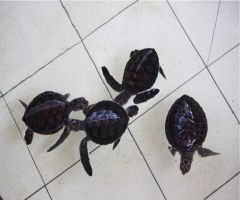 |
First established in the 1960's, there are now more than 10 such locations in the country, with some centers fully equipped with research and modern high-tech facilities, such as equipment for the tracking of sea turtles in the oceans.
The initiatives to safeguard and protect the sea turtles were led not only by the respective states and government departments but also by concerned non-governmental organisations (NGOs) like the WWF and other wildlife and nature societies.
And over the years these Malaysian sea turtle sanctuaries and hatcheries had helped to revive and grow, albeit slowly, the dwindling sea turtles population in the country.
There is now better hope and confidence that the number of sea turtles and their species found in the country will slowly rise again.
Locations of the Sanctuaries and Hatcheries
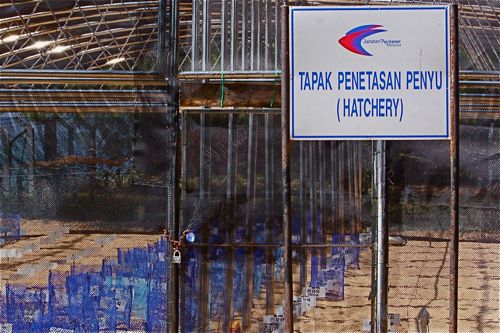 |
In Peninsular Malaysia, the sea turtle sanctuaries and hatcheries are mostly managed by the Fisheries Department of Malaysia.
In Sarawak they are administered by the Sarawak Forestry Corporation, while in Sabah the turtle sanctuaries and marine parks are run by the Sabah Parks administration.
The following are the main sanctuaries and hatcheries in Malaysia:
- Pulau Salang-Tatang Turtle Sanctuary, in Sarawak
- Turtle Islands National Park (Taman Negara Pulau Penyuh), in Sabah
- Turtle Management Center at Segari, in Perak
- Turtle Management and Information Centre at Padang Kemunting, Pengkalan Balak, in Melaka
- Turtle Hatchery Center at Pulau Upeh, in Melaka
- Turtle and Marine Ecosystem Center, Rantau Abang, in Terengganu
- The Ma' Daerah Turtle Sanctuary Center, Kemaman, in Terenganu
- Turtle Hatchery Centre at Pantai Kerachut, in Penang
- The Turtle Sanctuary and Information Center at Cherating, in Pahang
- The Tengku Arif Temenggung (TAT) Sanctuary at Teluk Sri Intan, Pulau Tioman, in Pahang
- Turtle Hatcheries at Teluk Baruk and Pasir Mentawak, Kampung Juara, Pulau Tioman, in Pahang
What Are Turtle Sanctuaries and Hatcheries For?
These sites are designated as reserved and protected areas, and no human visitors are allowed at the sites or on the beaches at all times or during set times.
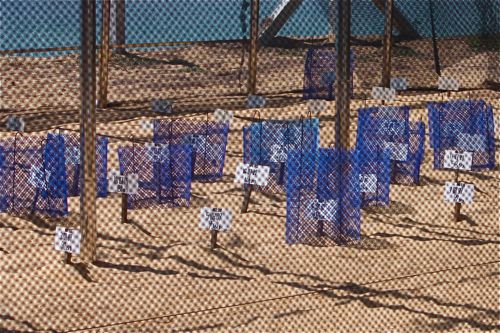 |
This is to ensure that the sea turtles are not disturbed when they come to land on the beaches and especially so when they are laying their eggs, which can take hours to complete.
The turtle hatcheries are usually fenced-up with enclosures near the beach.
This is not only
to stop human poachers from stealing the eggs for consumption but also
from natural predators like birds, crabs and monitor lizards.
In the fenced-up enclosures we will find that there are holes dug in the sand.
Inside these holes are the turtle eggs (in some locations they are kept in styrofoam boxes filled with sand) and each hole is surrounded by its own little wire-mesh fence with some information or data, like number of eggs and the date of incubation.
When the eggs hatch, usually about 45-60 days later, the hatchlings are taken and kept in basins or in a small pool before they are released at night, to increase their chances of making it to the sea, before being spotted by their natural predators.
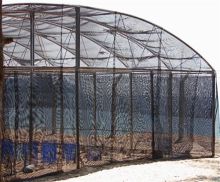 |
And because when they mature the hatchlings return to the same beaches they were born, it is important that many of these tiny hatchlings make it to maturity, so that they will come back for nesting in the future. Hopefully there will be more of them then.
Besides working on the hatcheries, these turtle centers also help to disseminate information on the status of the turtles, like the daily numbers of landing and nesting, eggs incubated and hatchlings released to the sea.
They also usually do extensive research work on the sea turtles, their food, habitats and behavior.
Miscellaneous continuing public awareness programs are usually conducted by the turtle centers to educate the public on the critical need to protect the sea turtles, their eggs and their environment. School children and villagers living near the beaches where the turtles land and nest are usually targeted in these educational programs.
Do Visit These Sanctuaries and Hatcheries
These sea turtle sanctuaries and hatcheries in Malaysia are open to the public during set times.
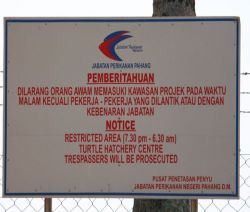 |
But at some locations, like those in Sabah and Sarawak, the number of visitors are regulated, and some centers have time-tables and strict schedules for visitors to follow when they are at the hatchery sites.
These
regulations are necessary and are meant to safeguard the sea turtles
natural habitats and help ensure a safe and conducive environment for
them to land and nest.
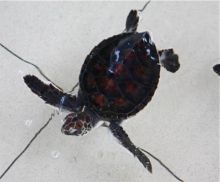 |
So, do make a visit to these sanctuaries and hatcheries in Malaysia to understand more of their habits and natural habitats. And make a contribution where you can.
Don't forget to watch the tiny hatchlings before their release to the sea, how they deliberately splash and swim in the basins or pools.
They look
like as if they are having fun but they are actually strengthening their
bodies for the perilous journey they will soon undergo.
Observe
and watch carefully how truly wonderful and captivating these creatures of God are.
But more importantly, dear visitors, do show your support and help fight for laws in all countries that will ban poaching, harvesting, sale and the human consumption of turtle eggs.
Don't ever support activities that will, directly or indirectly, further threaten their survival or that will lead to the subsequent extinction of these beautiful sea creatures.
Don't ever, please.
|
|
|
|
Return here from Sea Turtle Sanctuaries and Hatcheries to Malaysia Wildlife and Nature homepage
|
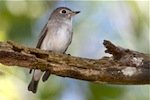 |
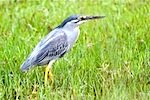 |
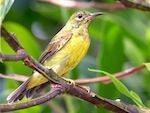 |
 |
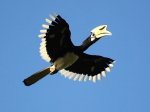 |
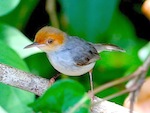 |
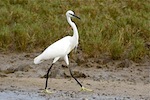 |
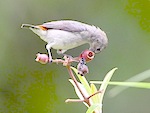 |
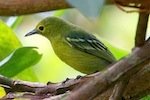 |

|




